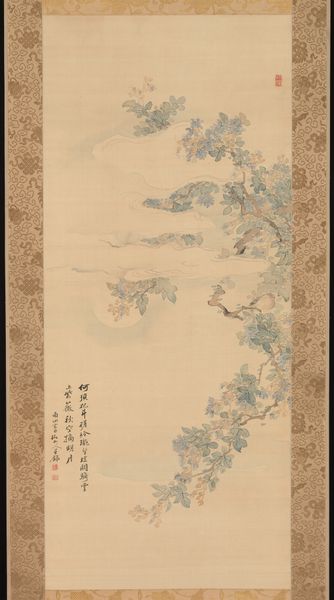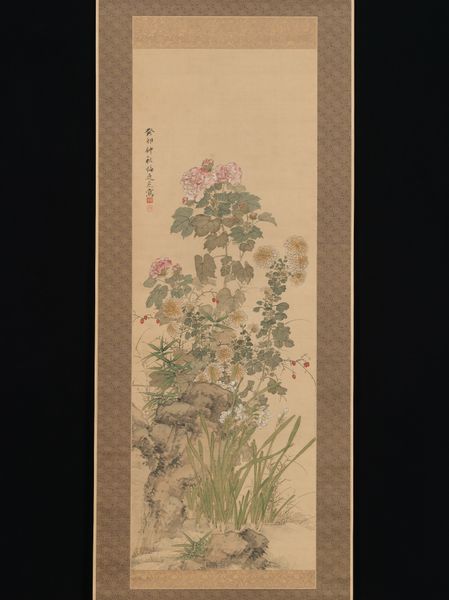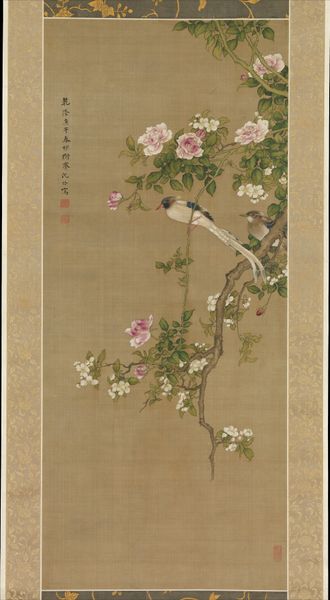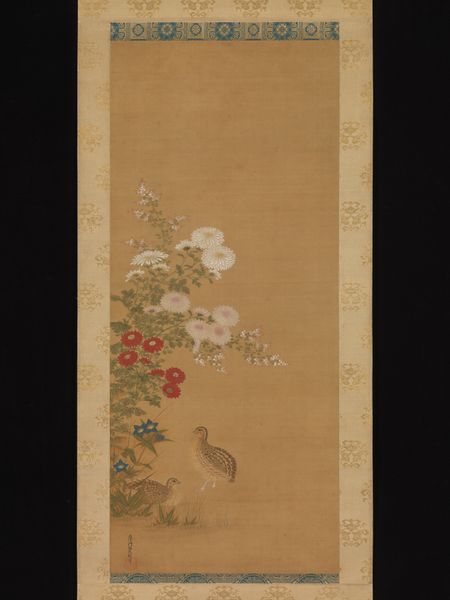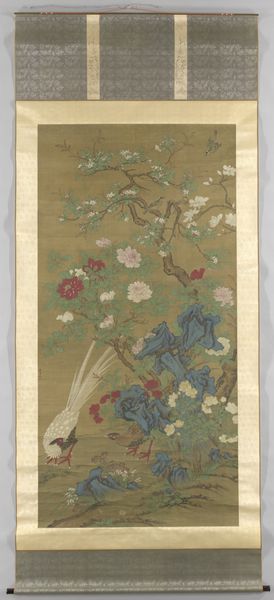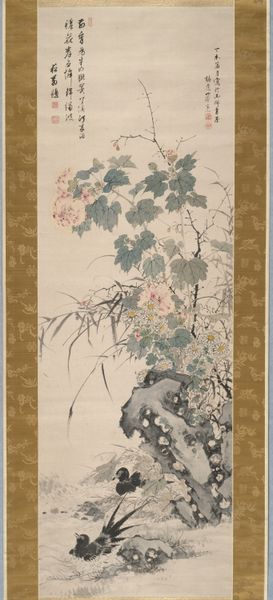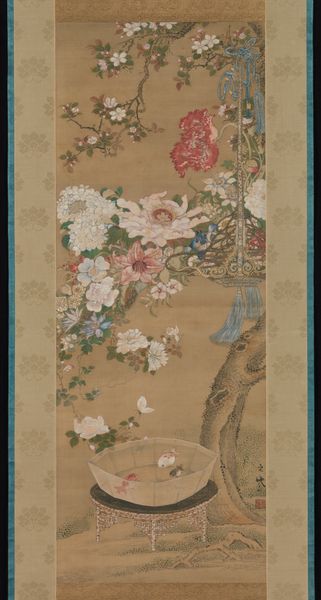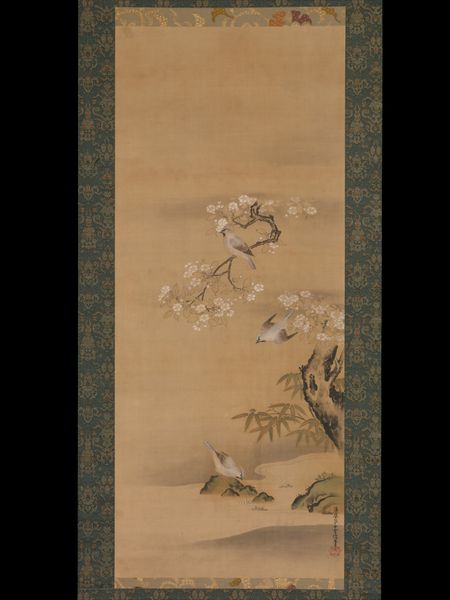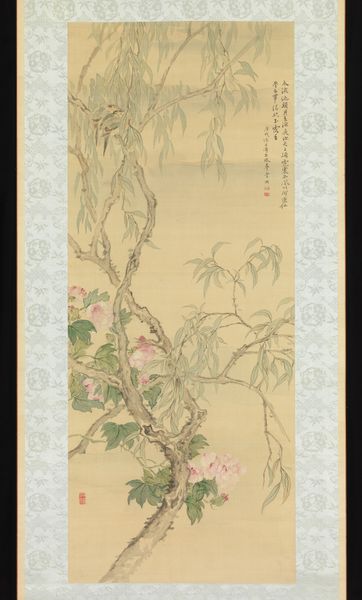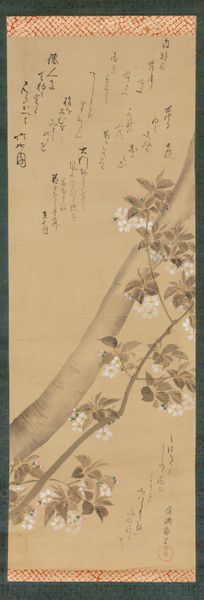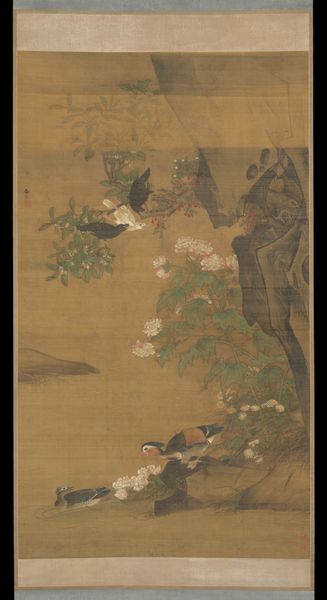
painting, paper, ink
#
animal
#
painting
#
asian-art
#
landscape
#
figuration
#
paper
#
ink
#
orientalism
Dimensions: Image: 42 5/8 × 16 9/16 in. (108.3 × 42 cm) Overall with mounting: 80 5/16 × 24 1/8 in. (204 × 61.2 cm)
Copyright: Public Domain
Mori Ransai rendered "Rabbit and Roses" with ink and color on silk in eighteenth-century Japan. The gentle rabbit, nestled near wild roses, is a symbol deeply rooted in cultural memory. In East Asian art, the rabbit is often associated with the moon and immortality, stemming from ancient folklore. In China, the rabbit grinds the elixir of life for the moon goddess, Chang'e. We find echoes of this symbolism in other artworks and traditions, where the rabbit signifies fertility, cleverness, and longevity. The roses, with their layered petals, evoke beauty and fragility, contrasting with the rabbit's resilience. This juxtaposition speaks to the transient nature of life and the enduring spirit of nature. One can sense the tension between vulnerability and endurance. Consider how these motifs resonate within our collective consciousness. The cyclic progression of symbols mirrors the cyclical nature of life. These images resurface, evolve, and take on new meanings, reminding us of the powerful, non-linear threads that bind us across time and cultures.
Comments
No comments
Be the first to comment and join the conversation on the ultimate creative platform.
